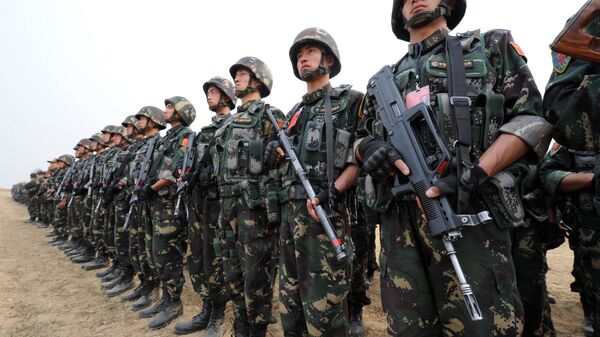China's state-run daily the Global Times recently shared a video on Twitter showing Chinese soldiers posted at the Line of Actual Control (LAC) practicing their “sleep training”.
The footage, with a TikTok watermark in the lower right corner, shows a group of Chinese troopers sleeping with their guns suddenly jumping into action just when they feel their weapons are being snatched.
“Even asleep with exhaustion after intensive training, they won’t allow anybody to take their guns away. This is what guns mean to Chinese soldiers”, the caption of the video posted by the Global Times reads.
Even asleep with exhaustion after intensive training, they won’t allow anybody to take their guns away. This is what guns mean to Chinese soldiers. pic.twitter.com/oEECEEoq97
— Global Times (@globaltimesnews) June 23, 2020
Indian netizens, however, riding on the anti-China sentiment since the recent deadly clashes between the two armies, have made their way to the comments section of the video. They are trolling the Chinese soldiers for their “overacting”, calling them a TikTok Army.
Its ticktok army
— Local Lion (@___PKMKB) June 23, 2020
overacting infinity pic.twitter.com/DXCyxjdPxB
— 💤💤 (@iamjitusrivas) June 23, 2020
Even random tiktok star can make better video than this in Bharat 😀
— Prashant Patel Umrao (@ippatel) June 23, 2020
China's People's Theatre Group At Work 😹@HuXijin_GT You need some hard work on these $ 1 Per Day Actors 😹
— J (@Sootradhar) June 23, 2020
— अंकित जैन (@indiantweeter) June 23, 2020
In India, the public sentiment towards China has been shifting following the outbreak of the pandemic and the recently escalated tensions at the border region in the Galwan Valley in Ladakh. Many Indians, including prominent public figures and celebrities, have been calling to #BoycottMadeInChina – that includes an array of products, ranging from smartphones to light bulbs.
On 15 June, Indian and Chinese troops engaged in a violent clash in Ladakh, which led to the death of 20 Indian soldiers. Following the deadly face-off, two sides have conducted several rounds of negotiations in order to de-escalate tensions in the disputed region and have agreed to disengage from friction points.


